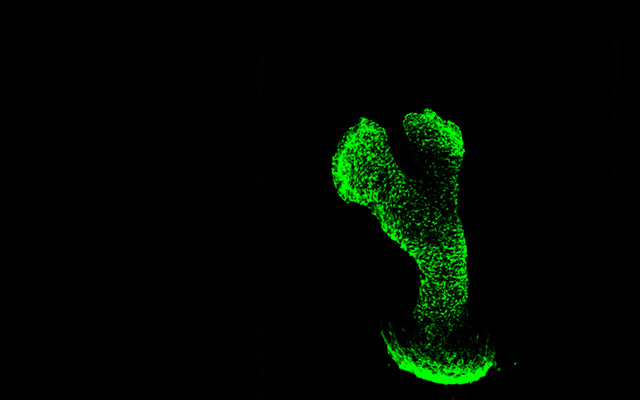Roles of VIT-VWA Domain-Containing Proteins in Ciliary Length and Cell Size Control in Chlamydomonas
REN Yahui1, XU Jia1*, PAN Junmin1,2*
VIT-VWA domain-containing proteins play crucial roles in various biological processes, but their functions in the dynamic regulation of ciliary length and cell size remain unclear. In this study, using Chlamydomonas reinhardtii as a model organism, two VIT-VWA domain-containing proteins (FBB6L1 and FBB6) were identified through homologous sequence alignment and phylogenetic analysis. Loss-of-function analysis revealed that knockout of FBB6L1 and FBB6 resulted in significantly elongated cilia and markedly increased cell size, indicating their critical roles in regulating both ciliary length and cell size. Further investigation demonstrated that FBB6L1 negatively regulates ciliary assembly through the MIDAS motif of the VWA domain, and its absence significantly accelerates the rate of ciliary growth during cilia regeneration, an effect dependent on the efficient utilization of the ciliary precursor pool. Additionally, the absence of FBB6L1 significantly accelerates cell growth rate, further supporting its important role in cell size regulation. Thus, this study reveals a critical role of FBB6L1 and FBB6 in the regulation of ciliary length and cell size, and provides molecular insights into regulation of ciliary length and cell size by VIT-VWA domain proteins.




 CN
CN EN
EN